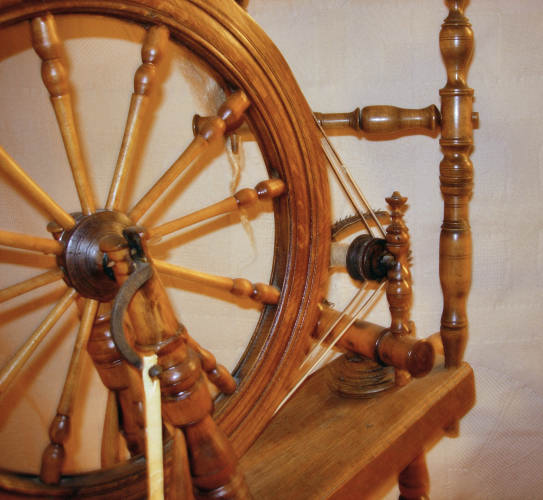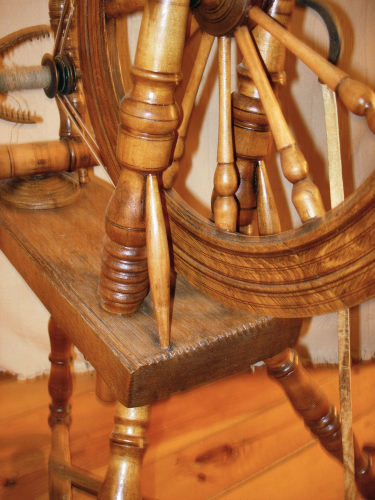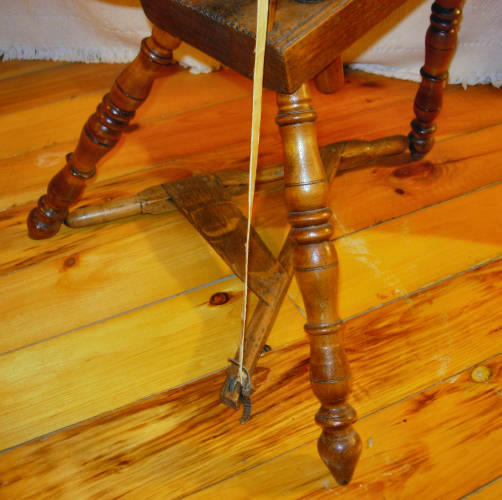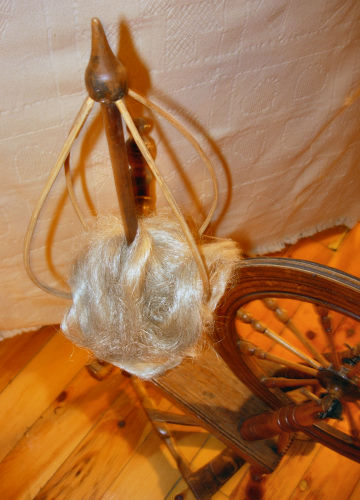

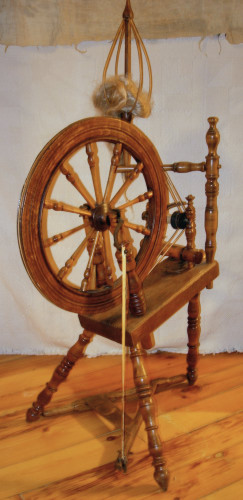
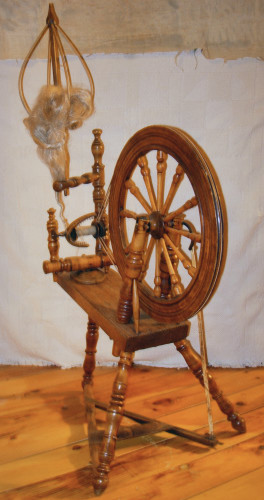
| This is what is commonly refered to as a spinning wheel. It is more accurately called a flax wheel, denoting the type of material spun upon it. Flax wheels were small (as compared to the much larger wool wheel) and the housewife could sit in a chair beside the wheel to do her spinning (as compared to the wool wheel that required the spinner to stand while spinning). This is a very fine example of a flax wheel, having a rich golden patina over its intricately turned parts. A similar wheel was dated to the 1750s. This piece's age is confirmed by the foot treadle's worn appearance. It should also be noted that the support post of the "birdcage", which is holding raw flax fibers, is original to this piece, despite the fact that the frame pieces have had to be reproduced. That 'support post' is more accurately known as the distaff. The name comes from the German word dis meaning a 'bunch of flax' and staff meaning, literally, a post or staff. The "birdcage" is shown in the bottommost image on this page. It was the part of the spinning wheel that held the raw flax fibers for easy reach by the spinner. Because of their fragility, the birdcage is usually the one part of a spinning wheel that does not survive through the years. |
